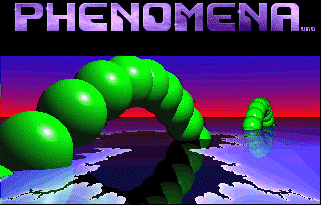Wow, Vista retail is out today!
This means I can go in a computer shop, pay 360€ and get a shiny box containing Windows Vista Home Premium Edition (the right one for a “power user” like me 😉 ).

Let’s have a brief look at some of its “innovative” features:
- The new Windows Update is a stand-alone application, not a web site anymore.
This sounds great, but pacman (as well as the other package managers) does already a great job keeping my box up to date, and it can run from a terminal, a script or wrapped in a graphical front end.
Another point is that it updates all the applications, not just the core modules of my OS, and, of course, what it downloads is just free (as in speech) software. - Windows Desktop Search is a brand new technology (who said Spotlight? 🙂 ) for desktop search that searches instantly for files and their content too.
It’s quite similar to what Beagle, Strigi or Tracker do on our Linux desktops since some time… - Aero Glass is the fantastic new 3D GUI that everyone already knows, “inspired” by Aqua and already available on our beloved Linux boxes via Compiz or Beryl.
- The Reliability and Performance Monitor, for what I can see from screenshots, doesn’t make much more than the Gnome System Monitor, KSysGuard or GKrellM.
- Windows Sidebar adds to your desktop all these tiny and colorful Gadgets, they are nice to look at, but I can’t see any innovation in them, have a look at adesklets, gDesklets, SuperKaramba, GKrellM again or at the Dashboard of Mac OS X.
- Windows Defender is a nice addition, I have to admit that we don’t have something similar for our *nix like boxes. 😀
- Network Map is a graphical network monitor, like Nomad.
- The Windows Firewall got an update, it now supports IPv6 and IPsec and performs outbound packet filtering. Linux has netfilter/iptables that is capable of much more, but a home user without running servers (and without Windows 😉 ) shouldn’t need a firewall in the first place.
- A new version of Movie Maker is included, but we have plenty of alternatives like Cinelerra, LiVES, Kino, PiTiVi…
- There’s Media Player 11, but, again, there are so many free alternatives that I won’t even list them here.
- Windows Photo Gallery is a photo management application with basic editing, no more or less than what F-Spot, gPhoto, Mirage, KPhotoAlbum or digiKam can do.
- Internet Explorer 7 and Windows Mail are the brand new applications for the basic network tasks of browsing the Internet and working with e-mails. Suffice it to say that one of the most important new features of IE7 is tabbed browsing while for Windows Mail it’s a Bayesian junk-mail filter. What does the words Firefox and Thunderbird mean to you?
Don’t ignore the possibility to use other alternatives too, like Epiphany, Galeon, Konqueror or Sylpheed, Balsa, KMail. - The User Account Control is an attempt to mimic *nix users and permissions system, but, I think, it will be soon deactivated by everyone. A Windows user is not accustomed to entering her/his password every time the system needs more privileges. 🙂
- DirectX 10 is maybe the only thing that could make you install Vista. If you are a gamer you absolutely need Vista to play the newest games, but if you are a graphic programmer you won’t need Direct3D 10 to actually take advantage of, say, geometry shaders, you can use GL_EXT_geometry_shader4 or GL_NV_geometry_program4. For detailed specifications about all the nVidia’s G80 OpenGL extensions you can have a look at g80specs.pdf (it is needless to say that we are all waiting for OpenGL 3.0 🙂 ).
- Microsoft admits that a shell is useful sometimes, so in Vista we have the Windows PowerShell. 🙂
Unfortunately WinFS has not made its debut in Vista, it would have been a really innovative file system, like the BFS was when first appeared ten years ago. 😉
We have demonstrated that Vista is beautiful and innovative, so let’s go to the shop and buy… plenty of RAM! One to two GB will suffice to run the monster, and don’t forget a DirectX 9 video card.
Yes, you need Pixel Shader 2.0 to handle Aero, there’s no fall back no-shaders mode like in some Beryl plugins (the blur one, for instance, works even on older cards).
To summarize the whole post, I will definitely not go to a computer shop and spend three hundred sixty Euros for something that doesn’t offer anything new, that is not free (both because it is proprietary and because it supports strong TC-like protections), and that is not a *nix!. 😉




